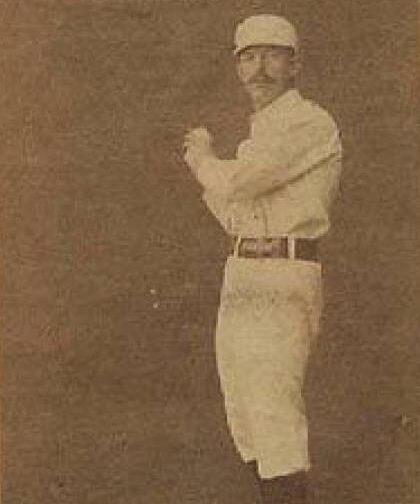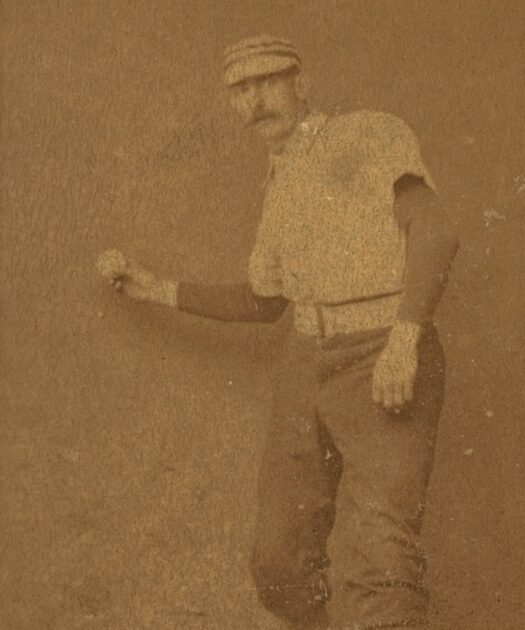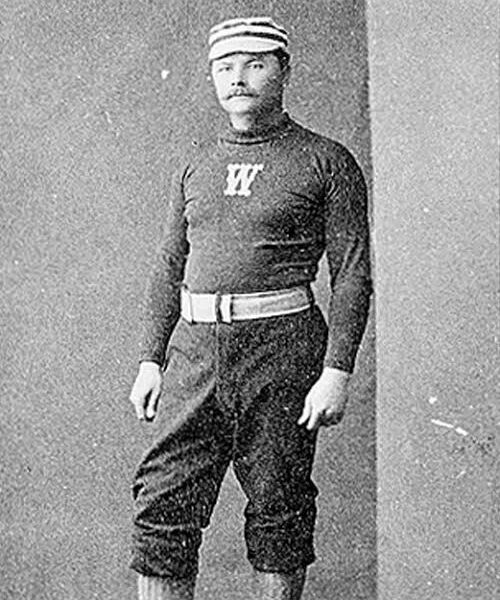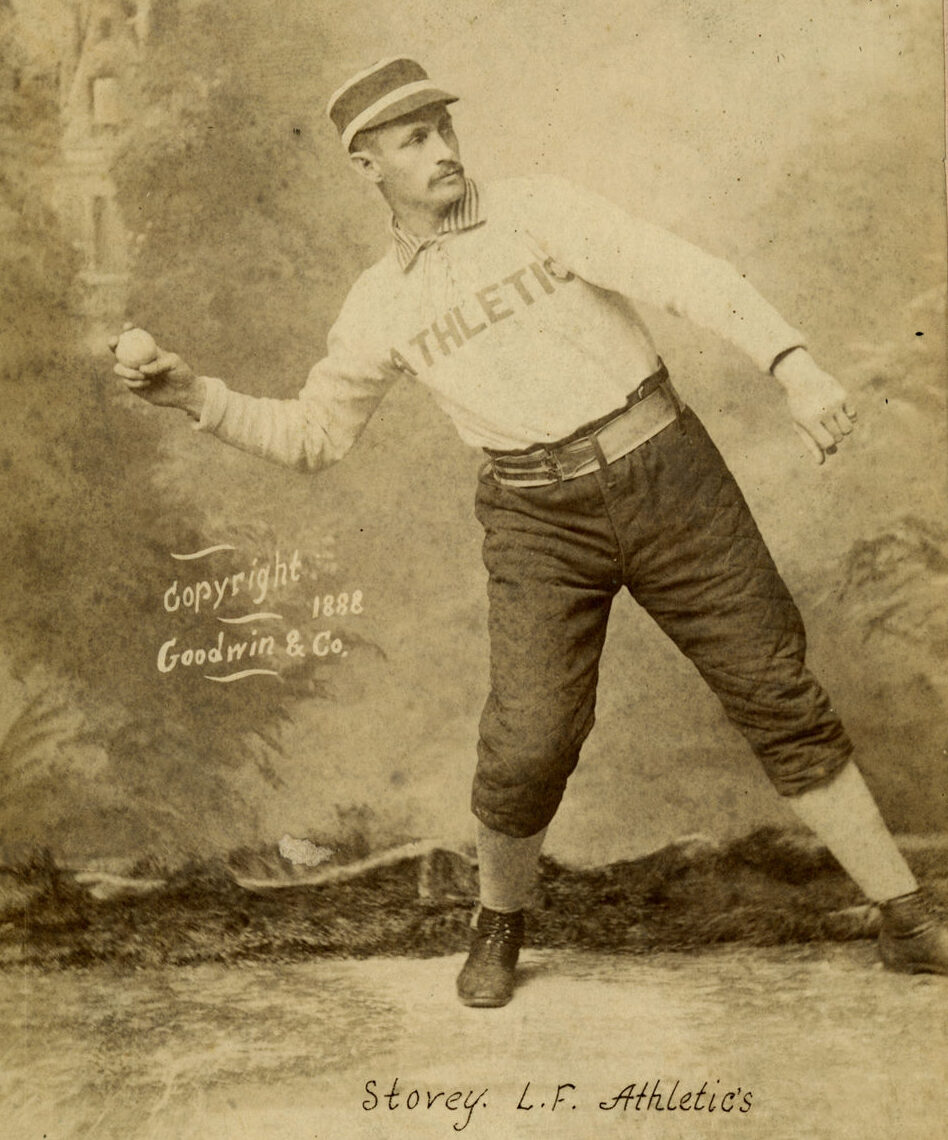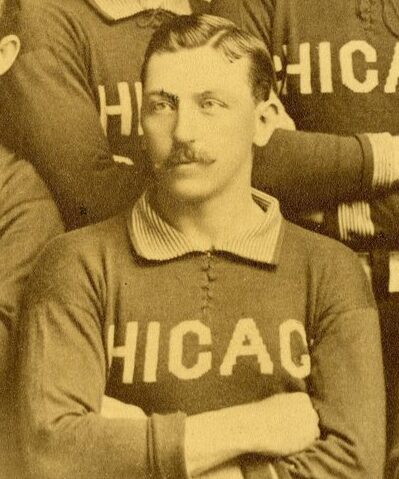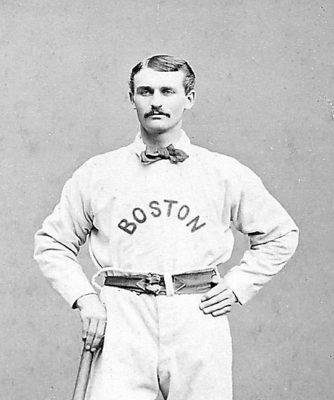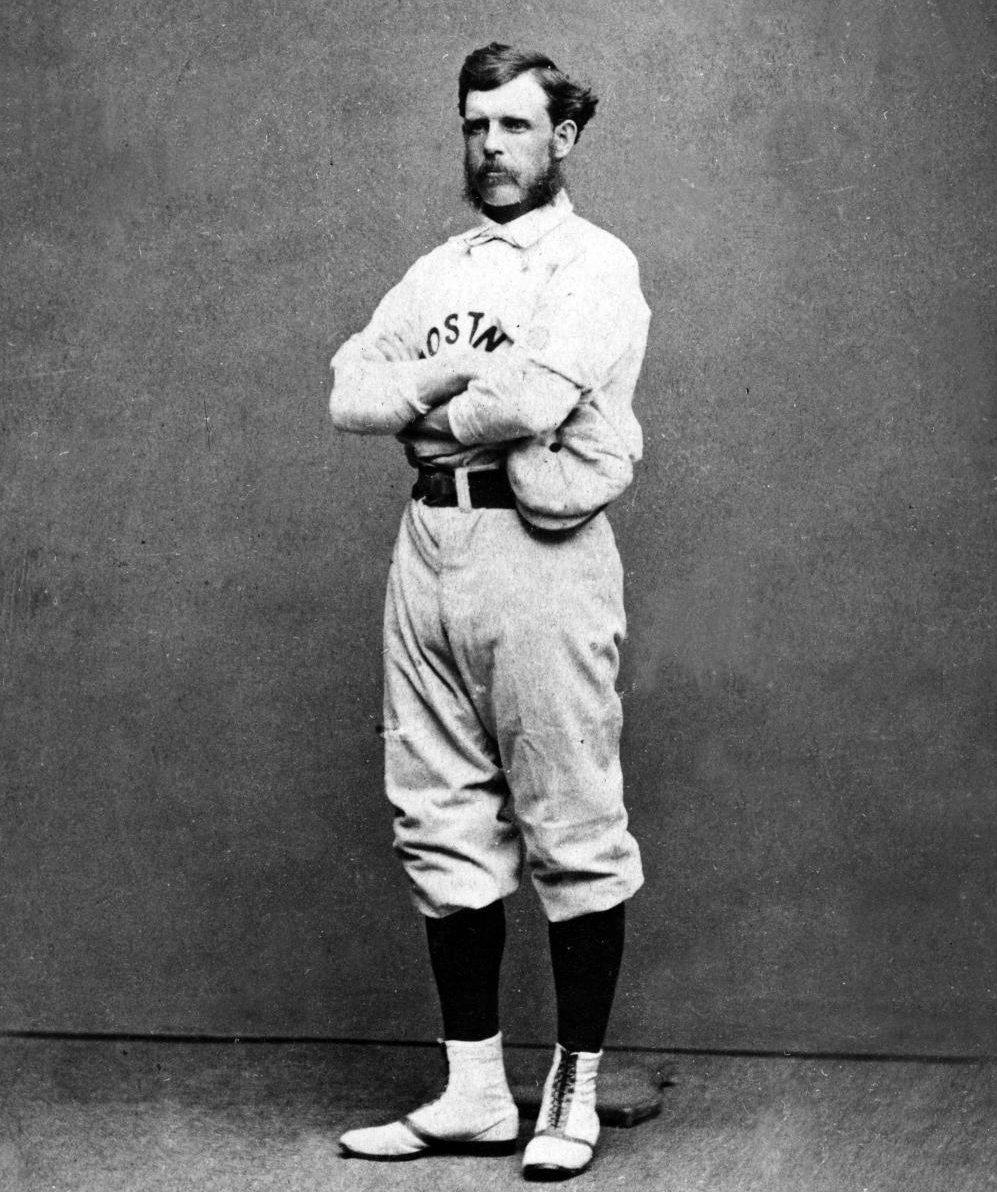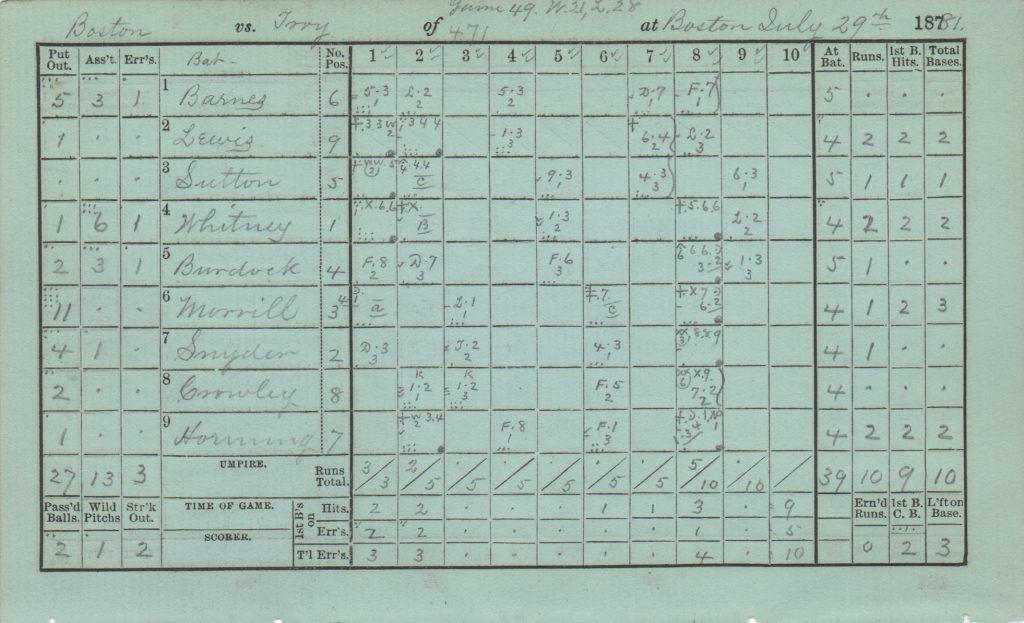
Ezra Sutton played at baseball’s highest level just as it turned from a largely amateur game to one in which all players were paid to play. After competing in the National Association of Base Ball Players in 1869 and 1870, Sutton joined America’s first all-professional league in 1871.
Playing for the Cleveland Forest Citys, Sutton suited in in the National Association’s first game on May 4, 1871. Today that is considered the initial contest in big league history. Four days later on May 8th Sutton’s fourth-inning at bat resulted in the first home run in Major League history.
Sutton spent two years in Cleveland before moving to the league’s Philadelphia Athletics from 1873 through 1875. His five years in the National Association featured a .318 batting average and a 125 OPS+.
In 1875 Albert Spalding recruited Sutton and Cap Anson to join the Chicago White Stockings for the upcoming 1876 season. Because jumping from one National Association team to another was illegal, White Stockings owner William Hulbert decided to start his own circuit – the National League.
Instead of signing with Hulbert’s squad, Sutton opted to stay with the Athletics who joined the upstart NL. Five years after playing in baseball’s first big league game in the National Association, Sutton played in the National League’s first contest on April 22, 1876.
After four years in Philadelphia, Sutton signed with the Boston Beaneaters before the 1877 season. In each of Sutton’s first two seasons with the club, the Beaneaters were champions of the National League. They took home a third NL flag in 1883 with Sutton.
The Seneca Falls native played in the NL’s first thirteen seasons. His high baseball IQ made him one of the game’s top fielders. Sutton was particularly adept at allowing infield pop-ups to drop with runners on so he could turn a double play. Six years after he retired the NL created the infield fly rule to nullify the practice.
After 18 big league campaigns, Sutton left the game in 1888. Today his career is difficult to assess. Because of the abbreviated season schedule of his day, Sutton played less than 100 games in 15 of his 18 seasons. As a result, his counting stats and (cumulative) WAR do not match up to the game’s all-time greats.
Don’t sell Sutton short though. At bat he finished in the league’s top-10 four times in hits, batting average, RBI, total bases, slugging percentage, and OPS+. He also finished in the top-10 in triples five times, runs three times, and doubles twice. A tough man to strike out, Sutton’s 29.5 at bats per strikeout put him 27th all time.
Defensively he was in the top-5 among third basemen in putouts and assists in seven seasons. Nine times he was among his league’s top-4 in fielding percentage at his position.
Many consider him the greatest third baseman of the 1800s. Some see him as a dark horse candidate for Cooperstown.
Shown here is a scorecard filled from July 29, 1881 with Sutton in the three-hole and playing third base. It is filled out entirely in the hand of Sutton’s Beaneater skipper Harry Wright.
Pitcher Jim Whitney earned the win in the Boston’s 10-3 victory over the Troy Trojans that day. Tim Keefe took the loss – one of 27 that season for the Hall of Fame pitcher.
